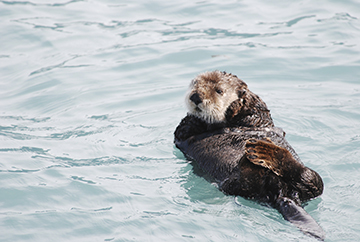
Chapter 8: Legal Considerations

Several international, federal, state, and tribal laws laws and processes would apply to a sea otter reintroduction, though they might differ depending on the reintroduction scenario and the source of the animals.
- Marine Mammal Protection Act (MMPA) – In U.S. waters, all sea otters are protected by the MMPA. The MMPA would impose restrictions and conditions on any sea otter reintroduction to Oregon.
- Endangered Species Act (ESA) – Two sea otter subpopulations—the southern sea otter in California and the Southwest Alaska stock of the northern sea otter—are protected under the ESA. The ESA would impose restrictions and conditions on any sea otter reintroduction to Oregon.
- National Environmental Policy Act (NEPA) – Federal permits would be required to capture and move animals for reintroduction. This permitting process would trigger a review—via an Environmental Impact Statement (EIS)—under NEPA that would evaluate a reintroduction’s environmental, social, and economic effects and provide opportunities for public involvement.
- Tribal laws and policies – Each tribal government within the range of a potential reintroduced population would have to be consulted as to their specific laws or policies governing the restoration and management of sea otters in tribal areas.
- Coastal Zone Management Act (CZMA) – Elements of the CZMA would have to be considered. It states that it is national policy “to preserve, protect, develop, and where possible, to restore or enhance, the resources of the Nation’s coastal zone for this and succeeding generations.”
- State management and protections – Oregon laws and the laws of the state(s) providing the source population(s) would define conditions and restrictions for a reintroduction. Furthermore, regardless of where the otters are sourced from, it is likely the released otters will need health care during their establishment phase. Rescuing and treating stranded sea otters from a reintroduced population would require specific authorization from the Oregon Department of Fish and Wildlife and the U.S. Fish and Wildlife Service.

Chapter 8
- International Protections
- Federal Management and Protections
- State Management and Protections
- Tribal Law Considerations
- Conclusions
- Information Resources
Potential Source Populations
Possible sources for a reintroduction to Oregon exist in Alaska, Washington, and California.
- Alaska – The best potential source of northern sea otters is a translocated population in Southeast Alaska. Withdrawing animals from this large and rapidly growing sea otter population (the largest in the United States) would have little measurable population-level effect.
- Washington – This neighboring state has a growing translocated northern sea otter population that spans the central and northern portions of its outer coast. Although the Washington animals are likely mixing genetically with the translocated otter population in British Columbia, removing animals from this smaller population might produce undesirable demographic impacts on the source population.
- California – Sea otters in California could be sourced in two ways:
- Wild animals could be captured from the mainland population. However, the ESA lists the population as threatened. So, capturing wild animals would entail significant legal hurdles and could negatively impact that slowly recovering population. While the introduction to Oregon of individuals representing both northern and southern sea otters may be desirable from a conservation genetics perspective, the potential reintroduction of individuals from the ESA-listed California population would present a new set of legal and regulatory challenges.
- Surrogate-raised juveniles could be used. These juveniles are orphaned or abandoned live-stranded pups raised by non-releasable females living at an aquarium or other facility. Surrogate-raised sea otters have been released successfully into estuarine habitat in California. Using them for an Oregon reintroduction would have zero effect on California’s wild population.
Learn More
- Chapter 1 – Intro
- Chapter 2 – Prior History
- Chapter 3 – Population impacts
- Chapter 4 – Genetic considerations
- Chapter 5 – Ecosystem effects
- Chapter 6 – Habitat suitability
- Chapter 7 – Socioeconomics
- Chapter 8 – Admin/legal issues
- Chapter 9 – Logistics
- Chapter 10 – Health & welfare
- Chapter 11 – Stakeholder issues
- Chapter 12 – Conclusions
- Appendices: ORSO app, maps
Related: Reintroduction Economic Study
Key Terms
Click on the following key terms used on this web page to see their definitions on the glossary page:


